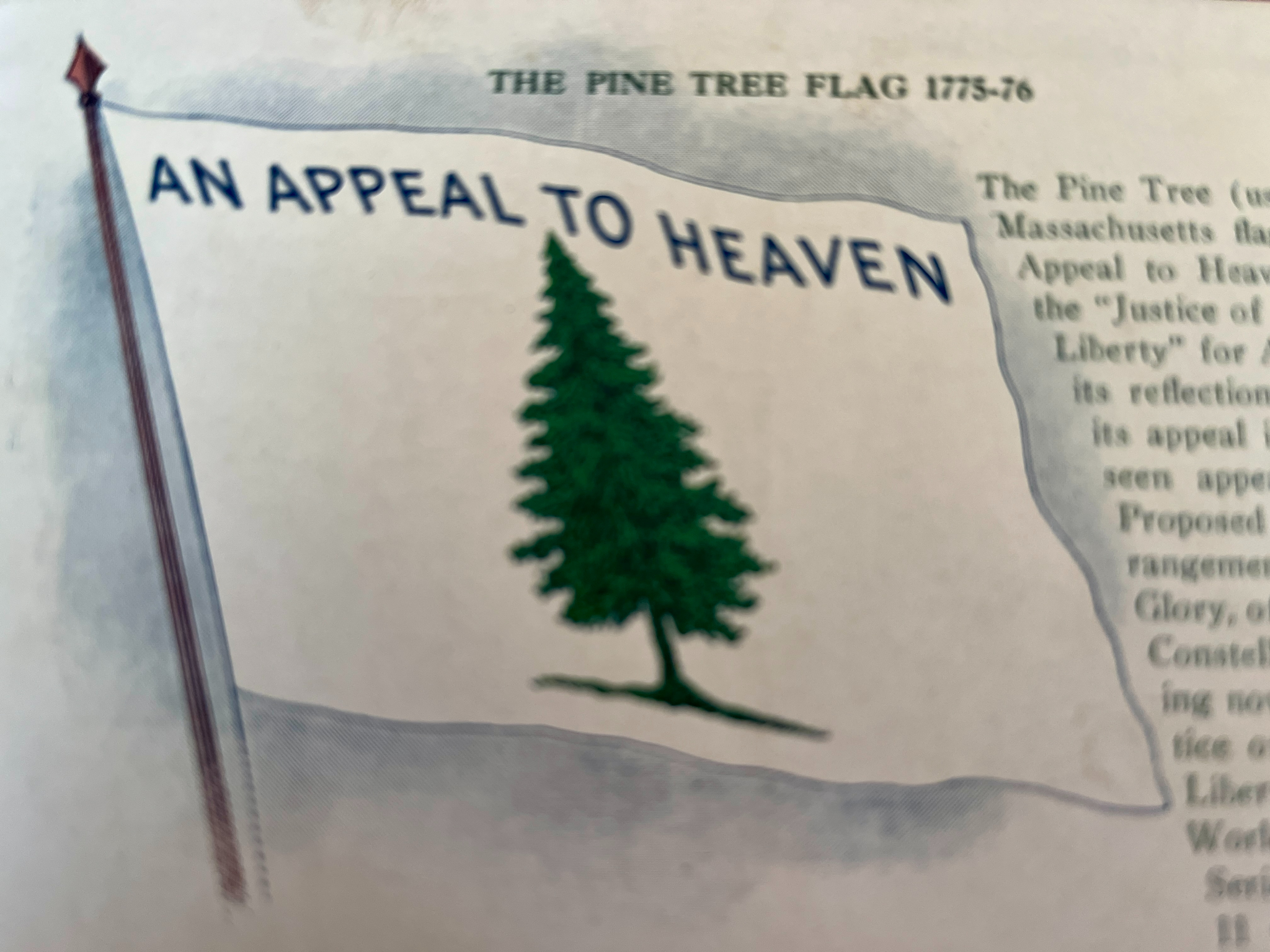Politically active Granite Staters and New Hampshire history buffs were puzzled by The New York Times’ three-byline, in-depth story on U.S. Supreme Court Justice Samuel Alito flying the historic Pine Tree Flag at his beach house.
According to the Times, the flag is a “provocative symbol” that may not “comport with his obligations as a justice.”
But to millions of Americans, particularly New Englanders, the Pine Tree Flag is part of American history. It waves at the annual commemorations of the 1772 Pine Tree Riot in Weare, N.H., one of the first acts of resistance against British authority by American colonists. The pine tree logo is used by the New England Revolution soccer team. There’s even a pine cone on top of the Massachusetts state house.

The Pine Tree Flag on display at the 2024 Pine Tree Riot event in Weare, N.H.
What New Englander could possibly be offended by this historic symbol?
U.S. Rep. Annie Kuster (D-N.H.).
Kuster joined at least 45 of her fellow Democrats calling for Alito to recuse himself from any cases involving the Jan. 6, 2021 Capitol Hill riot because he had displayed the Pine Tree Flag.
“I have the expectation of an impartial judiciary hearing about the day I almost lost my life,” Kuster told Axios. “The fact that a justice of the United States Supreme Court holds out publicly symbols of insurrection, that to me hits very close to home.”
Also very close to Kuster’s home: Weare, N.H. The Pine Tree Riot took place in the congressional district she represents.
According to The New York Times, Alito has flown the “Appeal To Heaven” version of the flag at his New Jersey beach house. Because some of the Jan. 6 rioters also waved that flag, Alito’s character as a judge regarding events of that day is suspect.
Democrats also link Alito’s Pine Tree Flag to reports that the justice’s wife briefly displayed an upside-down U.S. flag at their Virginia home during a January 2021 dispute with a neighbor.
 Alito “definitively needs to recuse himself from any matter … that has to do with the Jan. 6 violent insurrection,” said U.S. House Minority Leader Hakeem Jeffries (D-N.Y.).
Alito “definitively needs to recuse himself from any matter … that has to do with the Jan. 6 violent insurrection,” said U.S. House Minority Leader Hakeem Jeffries (D-N.Y.).
Historians acknowledge the Pine Tree Flag was a symbol of rebellion — against the British. So was the Stars and Stripes (aka “The American Flag”), which was also waved by Capitol Hill rioters.
And the participants of the Pine Tree Riot event each year happily admit they are celebrating citizens rising up against a tyrannical government. They do the same thing every Fourth of July, too.
Greg Moore, regional director of Americans For Prosperity, was at this year’s Pine Tree Riot party, and he said Kuster was more than welcome to attend.
“It’s particularly odd that Rep. Kuster, whose district includes the place of the Pine Tree Riot, would fail to recognize the historical significance of the flag flying at Justice Alito’s house,” Moore told NHJournal. “Now that she’s retiring, she will have more time to connect with our state’s rich history up to and through the Revolution.”
If she does, Suffolk University history professor Robert Allison say she’ll discover the pine tree was a symbol of New England’s desire for self rule long before 1776.
“It represents the pine forests that were essential to the New England economy, and it became a symbol of the region’s calls for autonomy,” Allison said. “Look around, and you’ll see the symbol across New England — there’s a pine tree symbol in Faneuil Hall, for example. The pine tree shilling was a coin used by the colonies.”

The Pine Tree Flag displayed by the New England Revolution soccer team.
According to Allison, the “Appeal to Heaven” flag flew over Massachusetts troops that fought at Bunker Hill.
“The flag was designed in 1775 by Col. Joseph Reed, Washington’s personal secretary at the time, and was specifically commissioned by Washington himself,” writes Dan McLaughlin at National Review. “It evoked a New Hampshire riot against British tree regulations. It remains the official maritime flag of the Commonwealth of Massachusetts (albeit without the slogan, removed in the 1970s).”
Despite the history, Kuster says Alito’s use of the homegrown New Hampshire symbol is so egregious, he may have to be kicked off the court. Asked about impeaching Alito, Kuster told Axios, “I’ll give him the opportunity to recuse himself, and then we’ll cross that bridge.”
Why does Kuster believe this symbol should disqualify Alito from doing his job on the Supreme Court? She declined to respond to a request for comment.
One Granite Stater who’s watched the (alleged) controversy with great interest is former New Hampshire Speaker of the House Bill O’Brien. He currently serves as the head of the Pine Tree Public Policy Institute based in Nashua. What does he think about heading an organization named after a symbol of insurrection and hate?
“It’s ridiculous,” O’Brien said. He recalled that when he was first elected speaker, House members presented him with a Gadsden flag — sometimes known as the “Don’t Tread on Me” flag — that he proudly displayed in the speaker’s office. Not long after, a New York Times reporter came to Concord to interview him, and she kept glancing nervously at the flag.
“I had to tell her, ‘You’re going to be OK.’ The flag made her that uncomfortable.”
O’Brien doesn’t believe Democrats demanding Alito’s resignation are actually offended by the pine tree symbol. They’re feigning offense in order to attack the legitimacy of the conservative majority on the court.
“It’s so obvious they are trying to undermine the Supreme Court, and they’re doing it because it’s one of the last institutions still strong enough to defend the Constitution. And they don’t want that.”
But if Democrats truly are offended, O’Brien says he has a solution.
“They should come to the Pine Tree Riot in Weare next year. It would do them some good,” O’Brien said. “



